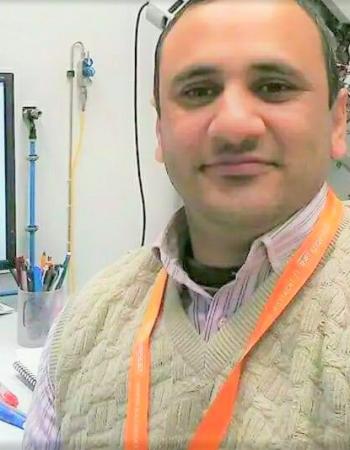Biomechanics and Implant Technology

The blog for Biomechanics and Implant Technology will be divided into two modules. In the first module we will begin with a general introduction of the body from the point of view of it being an engineering structure. There are many aspects to this since the human body contains soft tissues, hard tissues (skeletal system), and articulating joints. We will particularly look at applied topics of muscle mechanics, joint mechanics, and mechanical response of tissues to mechanical loading.
In the second module we will overview the response of the artificial bio implant to the body. Bio implants are synthetic biomaterials designed and manufactured to repair or replace a part or function of the body. We will compare properties of several different classes of biomaterial used in a medical application, Biomaterials, including metals, ceramics and polymers, shape memory alloys for use in medical implants. We will then look at key problems such as corrosion, stress shielding, static fatigue, and mechanical failure of implants. Finally, an outlook on SMM-based medical devices will be discussed for biomedical applications.
| Overview of Biomechanics |
| Introduction to biology for engineers. Biomechanics – Terminology – Skeletal Mechanics – Structure of bones, Structure of Muscles, Type of Joints, Lever in the human body – Nine Fundamentals of Biomechanics- Nine Principles for application of Biomechanics. |
| Mechanics of Musculoskeletal system |
| Principles of Joint motions, Knee Biomechanics: Structure and Function, Knee Biomechanics, Hip Biomechanical Properties, Spine Biomechanical Properties, Introduction to Muscle Anatomy, Muscle Mechanics, Muscle Micro and Macrostructure. |
| Mechanical Properties of Bone and Cartilage |
| The architecture of Bone Tissue, Growth of bones and Adaptation of their shape, Fracture Healing, Elastic properties of bones – Characterizing elastic anisotropy - Wolfe’s law of Modelling and Remodelling of bones, Mechanical and Viscoelastic Properties of Cortical Bone, Tendon/Ligaments, differences between non-living (avital) and living (vital) materials. |
| Principle of Implant Technology |
| Clinical problem requiring Implants for a solution, Design Parameters (Working Paradigm), Biocompatibility: Local and Systematic effects, Bone Plate Analysis and Design, Permanent versus Absorbable Devices, Prosthetic limbs, Cardiovascular Prosthesis, Devices (including pacemakers, defibrillators, stents, heart valves, filters), Case study of Organ Regeneration. |
| Design Solution –In use |
| Implants for Bone, Dental and Otologic Implants, Biophysical properties; Biomaterials (Relative Properties), Reactivity (Molecular Interaction), Bio adhesion (Tissue Bonding), Biomechanics of the bone growth Role of surface modification in Osseointegration, Biofunctional properties of several different classes of materials, including metals, ceramics, and polymers, for use in medical applications. Degradation of Devices, Bio- and Tribo-Corrosion. |
| Shape Memory Implants in Medicine |
| Shape memory effects in Implants, Bending Fatigue and Spring Back Properties Manufacturing of Shape memory implant for custom made Orthopaedics, Dental and Cardiovascular Applications, Case studies on innovative products, Preclinical testing for safety and efficacy. |

